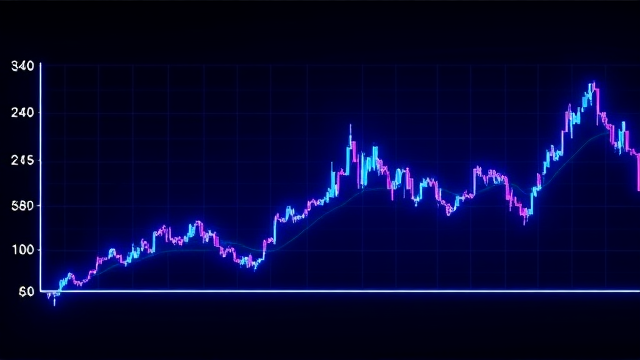HBAR Tumbles 5% as Government Shutdown Delays Critical ETF Approvals
The digital asset landscape shuddered this week as Hedera Hashgraph’s HBAR token tumbled nearly 5%, a slide from $0. 22 to a precarious $0.21 that speaks volumes about the fragile state of institutional confidence. This wasn't just another blip on the crypto volatility chart; it was a coordinated retreat, a stark reminder of how deeply intertwined the nascent world of decentralized finance remains with the old-world machinery of government.The selloff, which saw volatility spike to 5. 4% and concentrated, heavy selling between the early hours of 1:00 and 8:00 on October 9 pushing volumes beyond 100 million units per hour, was a textbook example of risk-off behavior.Technical analysts pointed to the stubborn resistance at the $0. 22 level—a clear line in the sand where corporate treasuries refused to enter—and the fleeting institutional support that materialized near $0.21, creating a painfully narrow trading corridor. The final hour of the session was particularly telling, with HBAR slipping another 0.85% to $0. 212.A brief, hopeful recovery attempt that peaked at $0. 215 around 13:24 was swiftly crushed, likely by institutional profit-taking, and the session's validation near lows of $0.212 confirmed the bearish sentiment. Most alarming, however, was the complete evaporation of market liquidity in the closing minutes, a three-minute window from 14:10 where trading volume collapsed to zero.This wasn't a mere technical glitch; it had all the hallmarks of a coordinated institutional exit, a synchronized pulling of bids that leaves retail investors holding the bag. The root cause of this unease is glaringly obvious to anyone bridging the TradFi and DeFi worlds: the U.S. government shutdown has effectively paralyzed the Securities and Exchange Commission.With federal operations halted, the critical pipeline for Exchange-Traded Fund approvals has frozen solid. This regulatory deep-freeze has direct, tangible consequences.Consider the pending ETF filings from entities like Canary Capital for both HBAR and Litecoin, which now sit in bureaucratic limbo, their futures uncertain. In this stalled environment, other players are forced to adapt aggressively; Bitwise, for instance, has slashed fees on its Solana ETF and added staking rewards in a desperate bid to stay competitive while the regulatory gears are stuck.This situation creates a classic catch-22 for corporate treasury management. On one hand, the promise of tokenized assets and blockchain efficiency is more compelling than ever, offering a future of unprecedented liquidity and programmable finance.On the other, the immediate regulatory fog is too thick to navigate for any risk-averse institution. The metrics from this HBAR selloff are a perfect case study for corporate risk officers: a 4.13% institutional retreat, intraday volatility that smashed through normal risk parameters, and defined resistance and support levels that now serve as a map for future treasury decisions. Until Washington finds a way to fund its government and restart the SEC's engines, this caution will prevail.The great convergence of traditional finance and digital assets, a future I passionately believe in, is currently held hostage by political gridlock. Corporate treasuries, which had been tentatively dipping their toes into the digital asset pool, are now retreating to the shore, waiting for the storm of uncertainty to pass.The defined risk parameters—resistance at $0. 215, support at $0. 212—are now the new battleground, and the complete liquidity withdrawal was a sobering demonstration of how quickly the bridges between these two financial worlds can be burned when the regulators clock out.
Latest News
The Ethereum network is currently witnessing a historic surge in stablecoin adoption, a development that feels less like a fleeting market spike and more like
3 hours ago0 comments
Canaan shares just ripped 40% higher, and if you’re not paying attention, you’re missing the entire plot.
4 hours ago2 comments
The crypto sphere is once again roiling with the kind of high-stakes drama that separates the digital asset world from the staid corridors of traditional
4 hours ago1 comments
The takedown of DarkMarket in January 2021 wasn't just another police raid; it was a declaration of war, a surgical strike against the dark web's most brazen
4 hours ago1 comments
Let's cut through the noise, because while the crypto media is busy hyperventilating over green candles and 'market stabilization,' the real story is unfolding
5 hours ago2 comments
In a fascinating convergence of two of the most disruptive technological forces of our time, crypto mining stocks staged a remarkable recovery on Monday,
6 hours ago0 comments
In a move that has the entire crypto sphere buzzing with a potent mix of disbelief and grudging admiration, corporate behemoth Strategy has once again doubled
6 hours ago1 comments
The crypto markets, in a display of raw, unforgiving Darwinism, staged a tentative recovery on Monday, but let's not mistake a dead cat bounce for a renewed
7 hours ago1 comments
It’s quiet here...Start the conversation by leaving the first comment.
